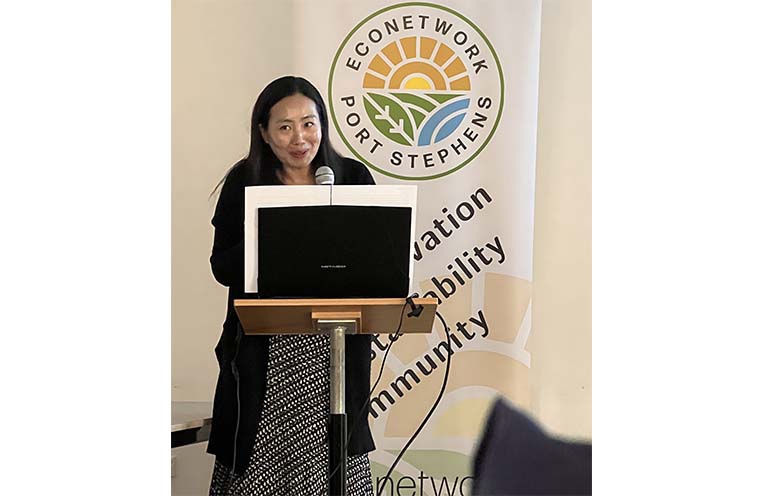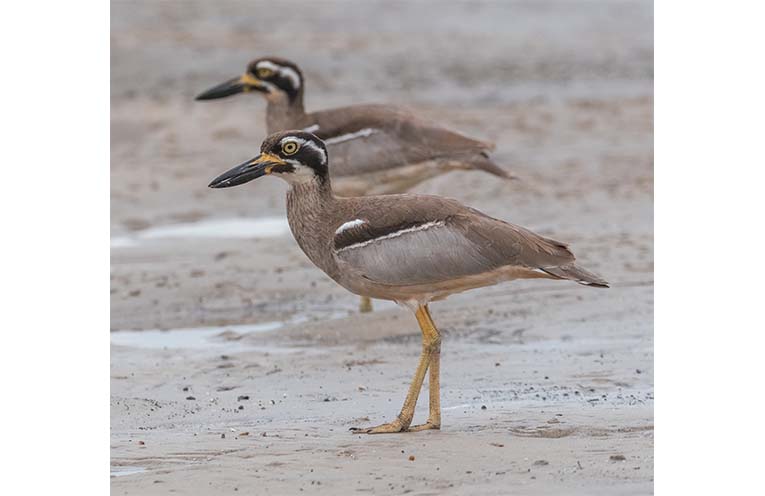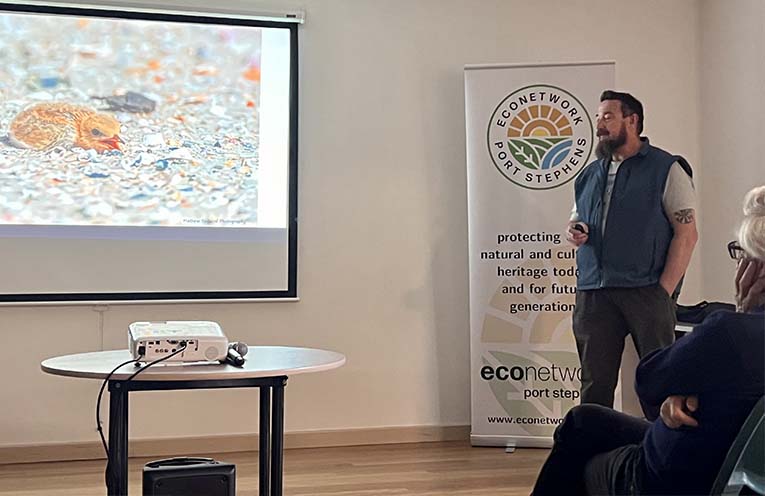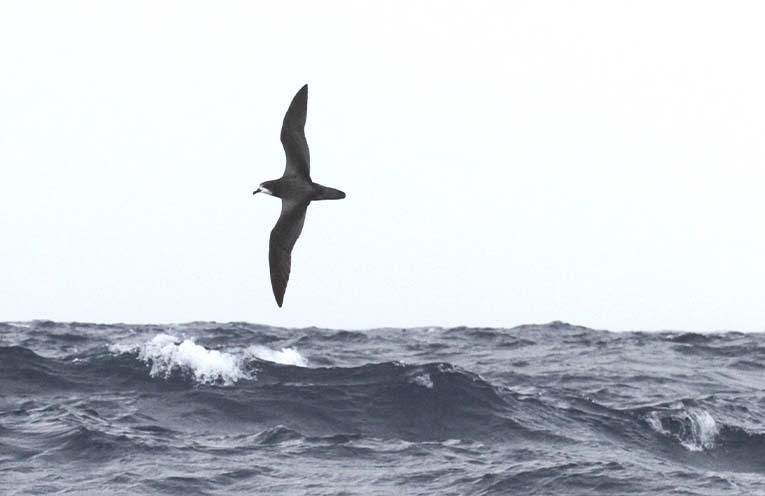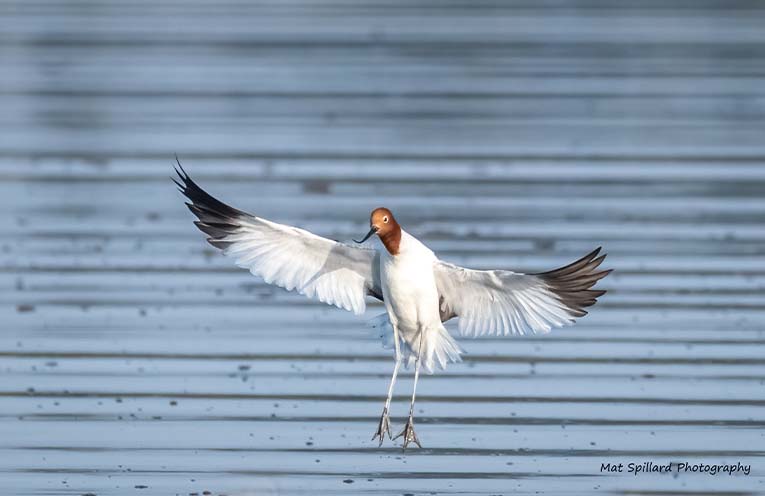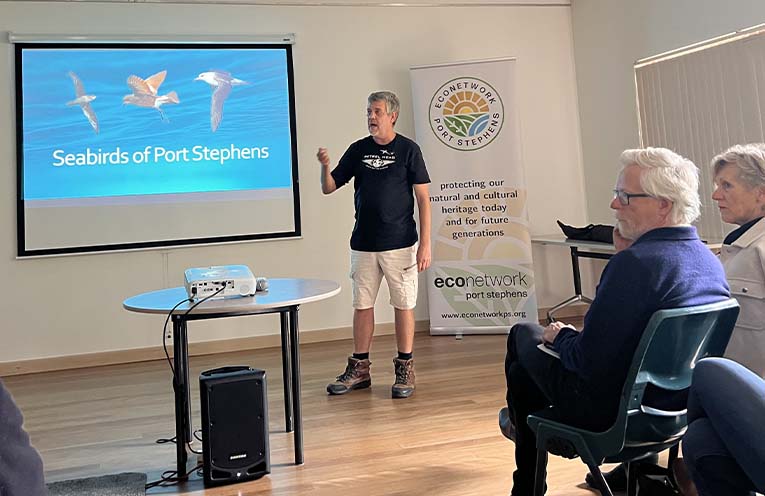
OVER 70 people gathered on Sunday 4 August for EcoNetwork’s annual bird forum, which focused on ‘Shorebirds and seabirds on and off the Port Stephens coastline’.
Held at the Tomaree Community Centre, the forum offered a rare opportunity to hear from experts and researchers on the latest bird monitoring and recovery programs.
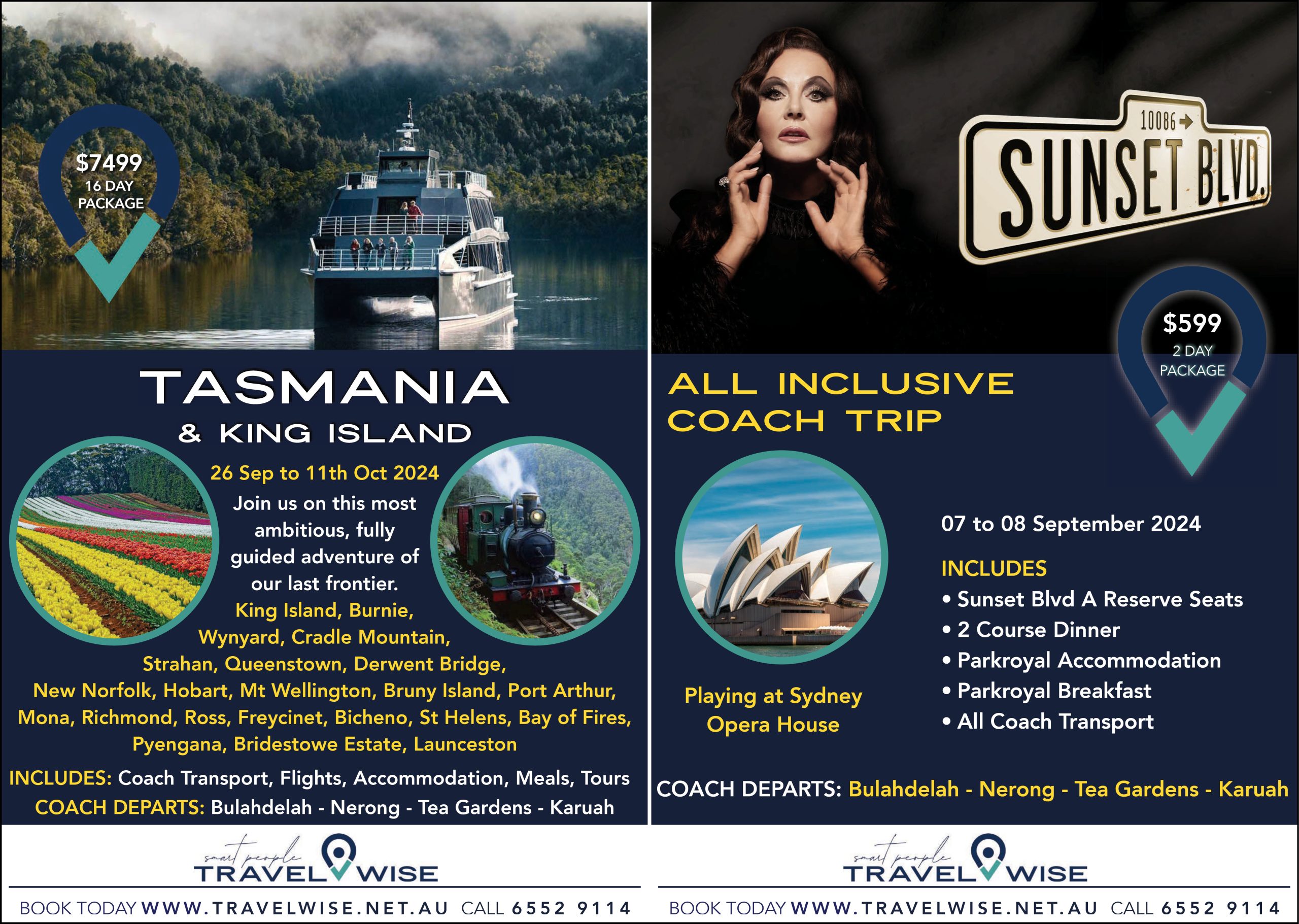 Advertise with News of The Area today.
Advertise with News of The Area today.It’s worth it for your business.
Message us.
Phone us – (02) 4981 8882.
Email us – media@newsofthearea.com.au
First to present was Mick Roderick, a self-confessed “petrel head” who arranges birdwatching trips to the continental shelf on a near-monthly basis.
“You need to get into deep water at the continental shelf to have any chance of seeing ‘true seabirds’,” Mr Roderick said.
“You won’t see them from land.
“It’s about 46 kilometres (km) from the heads of Port Stephens to the shelf.
“It’s a very long day, but we see amazing seabirds, cetaceans, sometimes sharks and rays and even unusual insects flying out over the ocean.”
Sydney-based researcher Dr Yuna Kim earned her PhD from Macquarie University, focusing on the conservation of Australia’s rarest petrel – Gould’s petrel – which breeds almost exclusively on Port Stephens’ islands.
Dr Kim specialises in investigating foraging ecology using tracking devices, providing scientific evidence to support conservation actions.
“Despite significant conservation efforts, there is still concern about the population of Gould’s petrels on Cabbage Tree Island, with recent declines in the number of nesting pairs and fluctuating breeding success,” Dr Kim said.
“We believe the causes for these declines are occurring at sea, where the birds spend most of their time and acquire all their food resources,” she added.
Dr Kim cited climate change, light pollution, fisheries, and potential offshore wind farms as threats to the Gould’s petrel at sea.
“The siting of any future wind farms needs to be carefully considered with regard to all our coastal bird activity, and detailed research data will be acquired before any decisions can be made,” a spokesperson for EcoNetwork told NOTA.
Also presenting at the forum was Tomaree birdwatcher Neil Fraser, who for many years has been actively monitoring avian species populations in the Mambo-Wanda Wetlands Reserve, Worimi Conservation Lands, and at Swan Bay and Broughton Island.
Neil’s presentation highlighted the significance of the migratory shorebirds that visit Port Stephens each summer, and how this occurrence is linked with communities 8,500 km away.
He also spoke of the importance of promoting awareness of wetlands.
“If we are to protect the many threatened species in and around Port Stephens, being better informed about the role of these wetlands and the plants and animals they protect, is an essential part of raising public awareness,” he said. EcoNetwork members are currently campaigning to have the Mambo-Wanda Wetlands listed under the Ramsar Convention.
Attendees also heard about the potential impacts of the bird flu likely to hit Australian shores this spring or summer.
BirdLife Seabird Project Officer Emily Mowat spoke at the forum, providing data from around the world on the Avian flu H5N1 2.3.4.4.b strain and preparations to deal with the virus.
Finishing on a lighter note, nature photographer Mat Spillard from Corlette took forum attendees on a wonderful journey with a lideshow of stunning bird images.
Mat said he is constantly inspired by nature.
“The more time we spend observing nature, the more we start to appreciate it,” Mat said.
“Wildlife needs our help, especially in protecting their habitats.
“If I can help in any way to spread the message through my photography, then I’ll feel like I have played a small part.”
Forum coordinator Ewa Meyer said feedback has been overwhelmingly positive.
“People tell me they absorbed so much new information, and will now be better equipped to identify more species, and above all, understand and act on the challenges that seabirds and shorebirds face today and in the future,” Ewa said.
“Places booked out very quickly, so next year we may have to find a larger venue.
“It’s wonderful that so many of our local residents are interested in learning about local birdlife and most are also keen to find out what they can do to help, especially in protecting wildlife habitat and reducing human-induced threats.”

